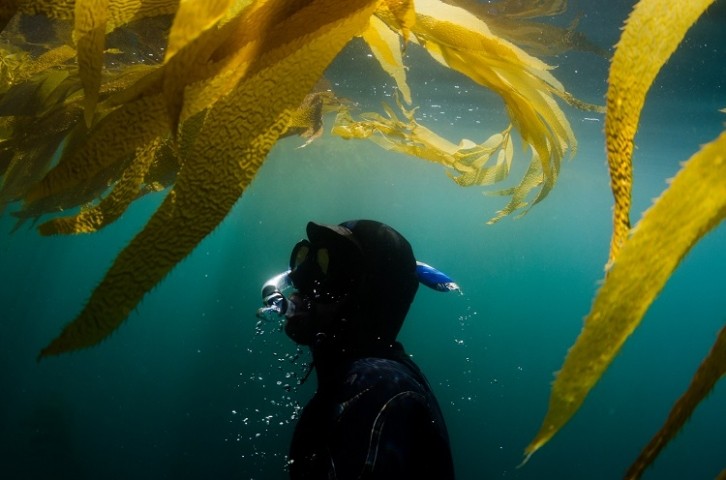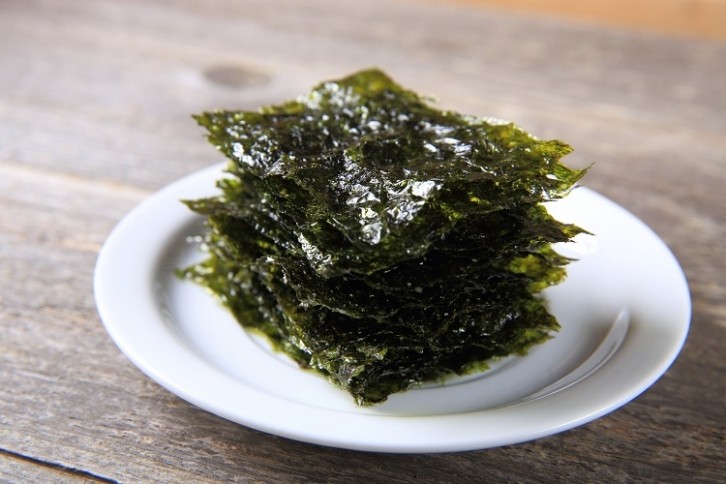Kelp seaweed: Is this the next 'superfood' trend?

The wellness trend is not just surviving, it’s absolutely thriving. From gut health to personalised nutrition, consumers are embracing foods and beverages, which promise to improve health. In fact, market intelligence platform Statista valued the worldwide wellness market at 5.61 trillion USD in 2022 and has projected it will reach 8.47 trillion USD by 2027.
So what will be next to join the wellness trend? Well, data from market research firm, Mintel, suggests it could be the rise of so-called superfood, kelp seaweed.
What is a superfood?
The word 'superfood' is in fact a marketing term, used predominantly by PR teams to raise the profile of a particular ingredient or product. It is not commonly used by dietitians or nutrition scientists. However it does tend to refer to foods, which provide health benefits resulting from a high nutrient density.
What is kelp seaweed?
Kelp seaweed is a large, brown seaweed, which typically grows in shallow saltwater near coastal areas across the globe. It can be consumed raw, cooked or as a powder sprinkled over other foods. Kelp seaweed is also available in a number of supplements.
What are the benefits of kelp seaweed?
Kelp seaweed has been linked to a number of health benefits and has been labelled a 'marine superfood'. This is unsurprising as it’s packed with nutrients meaning it could be considered a multivitamin in its own right.
Kelp seaweed contains the following vitamins and minerals:
- Vitamins A, B12, C, D, E, and K
- Calcium
- Iron
- Magnesium
- Manganese
- Iodine
- Potassium
- Nitrogen
- Iodine
- Zinc
- Copper
- Chromium
- Selenium
- Omega-3 fatty acids
Furthermore, the consumption of kelp seaweed has been linked to the improvement of sensory receptors, promoting healthy blood vessels, aiding in digestion and weight management, and even reducing hair loss.
However, concerns have been raised with regards to potential pollutants in all seaweeds, as pollutants could be absorbed into the plants when growing in coastal waters.
Is kelp seaweed sustainable?
Not only is kelp seaweed packed with vitamins and minerals, when farmed responsibly, it also rates highly on the sustainability scale.
“Kelp, a popular type of seaweed, has a much lower environmental footprint compared to traditional agriculture on land," said a spokesperson for the World Wildlife Fund (WWF). "As climate change and increasing resource consumption create concerns over food security, kelp is gaining recognition as a food source with a low environmental impact.”
However, there are concerns that the increasing demand for kelp seaweed could lead to unsustainable sourcing.
“Wild harvesting involves the collection of kelp from natural kelp forests in the ocean. While this method has been practiced by coastal and indigenous communities for generations, it is unable to sustain the rising global demand for seaweed,” explains a spokesperson for the WWF. “If wild kelp is harvested faster than it can grow back, populations can be depleted over time, eventually threatening the health of the entire kelp forest ecosystem. Overharvesting also harms the many species that depend on kelp forests for food and shelter, including sea otters, fish, octopuses and invertebrates. Not all wild kelp harvesting is unsustainable, but overharvesting is a risk in areas where the activity isn’t sufficiently regulated.”
By contrast, farmed kelp offers a sustainable solution. Farming kelp involves taking just a few blades of kelp from a natural kelp bed, which produce millions of spores that can be propagated in a designated underwater area. As these spores are grown in controlled conditions, their survival rate is significantly higher than if they were growing in the wild.
Additionally, kelp is a powerful carbon sink, pulling large amounts of carbon dioxide from the atmosphere as it grows. In fact, it’s one of the only foods that has a negative carbon footprint, and it requires no pesticides or fertilisers to grow.
Potential for kelp seaweed in the food industry
The health benefits of kelp seaweed will likely attract the interest of wellness-minded consumers so there’s huge potential for the food industry to integrate it into products.
According to data from Mintel, less than 1% of foods, beverages and supplements launched in Europe included kelp seaweed as an ingredient between 2019 and 2023. However, further investigation using Mintel's Ingredientscape AI tool shows that kelp seaweed’s prevalence in new food and beverage product launches across Europe steadily increased from 2005 up to 2023. As such Mintel say they expect the number of product launches containing kelp seaweed to grow further in the coming year.
“Interest in algae, such as the kelp seaweed, is growing in Europe due to its health and sustainability benefits,” explains Emma Schofield, associate director of Global Food Science at Mintel. “Seaweed has already gained popularity in western cuisine as chefs and food manufacturers explore its unique flavours and nutritional value. Food and drink brands have the potential to explore greater options with kelp. For example, in the snack category, creating seaweed-infused crispy seaweed chips or mixing seaweed into already popular items such as crackers or popcorn. Manufacturers can make seaweed more approachable for consumers and enhance its adoption by presenting it in familiar formats.”
For European food manufacturers, sourcing methods of kelp seaweed may change as consumer interest in kelp seaweed grows.
“The EU is currently one of the world’s biggest seaweed importers, receiving seaweed from countries like China and South Korea. However, there is interest in developing the market for European-produced seaweed. While the majority of seaweed is currently farmed in Asia, Mintel thinks that producers should consider European-grown algae ingredients, tapping into consumer interest in the economic, environmental and social benefits of locally grown food,” adds Schofield.





























